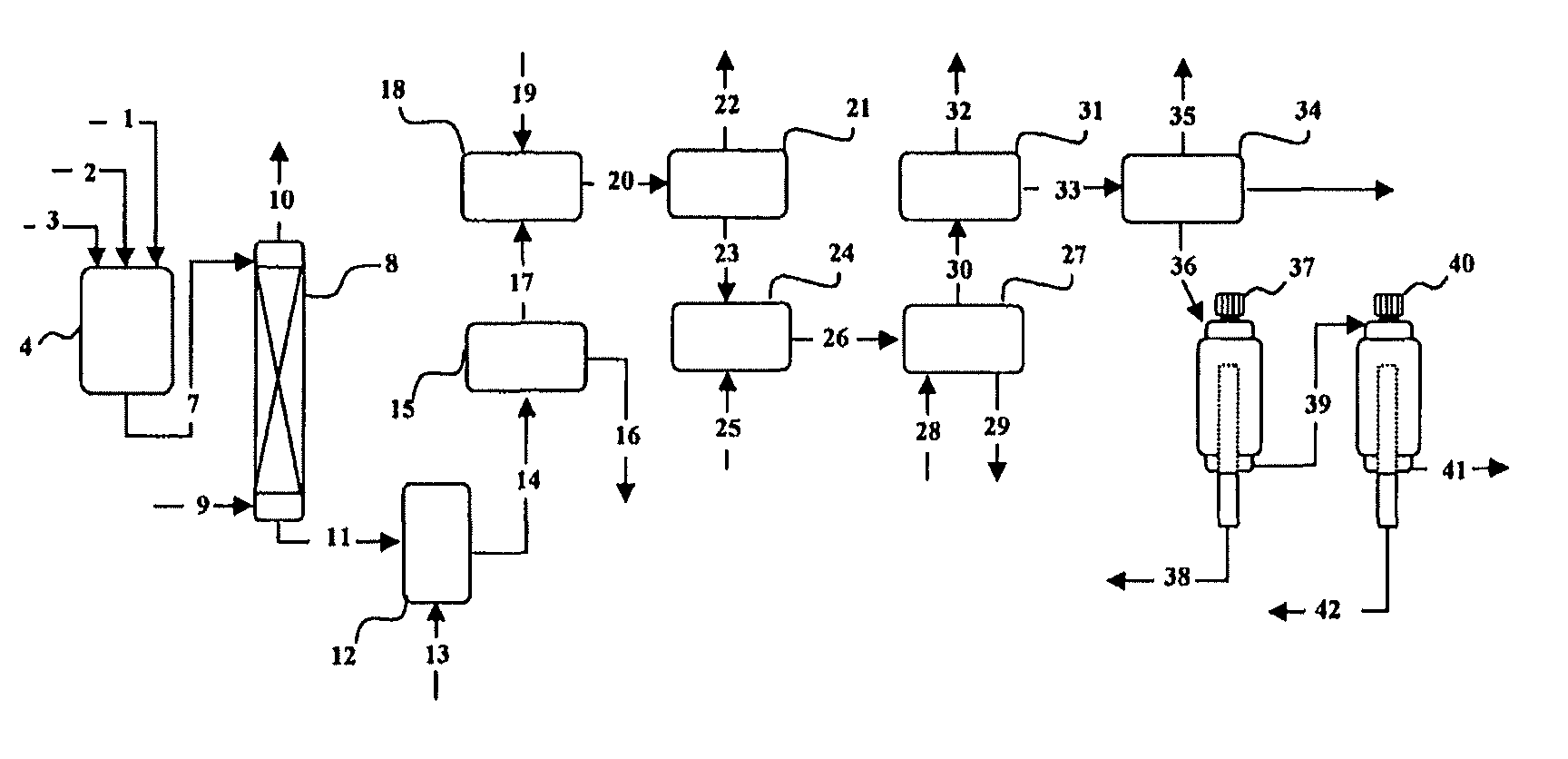Method for producing a concentrate of eicosapentaenoic and docosahexaenoic acid esters
a technology of eicosapentaenoic acid and concentrate, which is applied in the preparation of carboxylic compounds, fatty acid chemical modification, fatty-oil/fat refining, etc., can solve the problems of inability to provide a product whose organoleptic properties are acceptable, inability to provide products, and inability to meet the requirements of the produ
- Summary
- Abstract
- Description
- Claims
- Application Information
AI Technical Summary
Benefits of technology
Problems solved by technology
Method used
Image
Examples
example 1
[0060]Preparation of a concentrate of ethyl esters of EPA and DHA of salmon oil.
[0061]300 g of salmon oil used in comparative example 1, 150 g of ethanol and 150 g of sodium hydroxide solution in distilled water at 28% were placed in a 2000 ml Erlenmeyer flask. The mixture was refluxed and purged with nitrogen for one hour, resulting in full saponification of the salmon oil.
[0062]The saponified mixture was placed in a 3000 ml separating funnel and 150 g of ethanol, 150 g of distilled water and 900 g of hexane were added to the funnel. The resulting mixture was shaken vigorously and was left to settle. The upper hexanic phase was separated and the lower aqueous phase was extracted three more times with 700 ml of hexane. The hexane extracts were desolventized in a rotary evaporator at a reduced pressure.
[0063]The aqueous phase was acidulated by adding 200 g of an aqueous solution of hydrochloric acid at 20%. The resulting organic was washed with portions of an aqueous solution of etha...
example 2
[0068]Preparation of a concentrate of ethyl esters of EPA and DHA from sardine oil.
[0069]Example 1 was duplicated using sardine oil, with a Totox value of 45. Analysis of samples is shown in Table 5:
[0070]
TABLE 5Analysis of samples Example 2SardineFattyEthylSecondOilacidsEstersdistillateEPA16.116.31630.1DHA6.26.16.215.4Total ω -324.124.223.448.2PCB, ppb104.641.644.118.5PCB as Dioxins, ppt3.20.30.40.6Dioxin + Furanes, ppt2.10.30.30.4Peroxides, meq / kg10.73.53.60.1Anisidine23.61.91.80.1Totox458.99.00.2Heavy MetalsArsenic, ppb980345330
example 3
[0071]Preparation of a concentrate of ethyl esters of EPA and DHA from mackerel oil.
[0072]Example 1 was duplicated using jack mackerel oil having a Totox value of 33. The results of the example are shown in Table 6:
[0073]
TABLE 6Analysis of samples of Example 3Jack MackerelFattyEthylSecondOilacidsEstersdistillateEPA5.45.45.115.7DHA16.816.916.332.2Total ω -324.424.622.650.1PCB, ppb91262718PCB as Dioxins, ppt3.70.91.01.1Dioxin + Furanes, ppt3.10.50.50.4Peroxides, meq / kg9.24.13.80.3Anisidine14.61.11.10.2Totox339.38.70.8Heavy metalsArsenic, ppb890210196
PUM
| Property | Measurement | Unit |
|---|---|---|
| temperature | aaaaa | aaaaa |
| temperature | aaaaa | aaaaa |
| pressure | aaaaa | aaaaa |
Abstract
Description
Claims
Application Information
 Login to View More
Login to View More - R&D
- Intellectual Property
- Life Sciences
- Materials
- Tech Scout
- Unparalleled Data Quality
- Higher Quality Content
- 60% Fewer Hallucinations
Browse by: Latest US Patents, China's latest patents, Technical Efficacy Thesaurus, Application Domain, Technology Topic, Popular Technical Reports.
© 2025 PatSnap. All rights reserved.Legal|Privacy policy|Modern Slavery Act Transparency Statement|Sitemap|About US| Contact US: help@patsnap.com


